Todwick Environment: Wild Birds
SK58 Birders – December 2017
The first meeting of the New Year will be on Wednesday, 31 January 2017 starting at 7.30 in the evening. Chris Lilley, a SK58 member, will give a talk on “Bird Ringing”. The regular monthly walks around Langold Lake are on the second Monday of the month, meet at 10.00 am by Andy’s Cafe. Everybody is most welcome to join the stroll, the more pairs of eyes the better the chance of finding the birds.
Locally, now the first Winter snows, frost and cold weather have arrived there are plenty of birds around the village gardens looking for seeds and scraps. House Sparrow have good footholds in a number of village sites, this common bird is struggling in many areas but not in Todwick. Other common finches around are Chaffinch, Greenfinch and Goldfinch all of which will be attracted to seed feed.
Blackbird numbers also swell at this time of year, local birds being joined by European migrants moving away from the continental cold. The males are blacker and have a striking yellow bill and eye ring.
There appears to be maintenance work on the Axle Lane ponds with the site closed to anglers. When nobody is around the Cormorant have moved in to do the fishing, 10-15 birds having been recorded on a number of days.
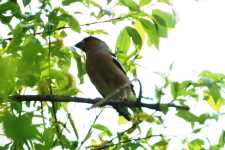
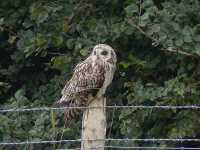
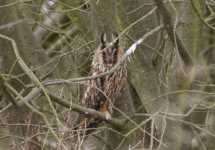
There has been the usual Winter influx of continental wildfowl to our local water sites – Langold & Carlton Lakes. Goosander and Pochard on Langold and an impressive count of 18 Gadwall at Carlton, these birds are quite similar to Mallard, the males without the green head & neck. Wigeon have been recorded on Tommy Flockton’s Marsh, feeding on the greenery of the shallow waters.
Nationally there has been a big migration of Hawfinch mainly to southern areas but 4 birds were seen at Roche Abbey. These birds are scarce in the summer, a few locally present in Clumber Park near the visitor centre. They are large colourful birds with huge beaks reputably able to crack open cherry stones.
The SK58 main site at Dinnington Woodlands has recently attracted a Short-eared Owl, joining the more common Tawny and Barn Owls. The Tawny is a night feeder but the other two are often hunting at dawn and dusk.
Please try and keep leaving bird feed in your gardens, these cold months are a good time to attract a few different visitors – Woodpeckers to nuts, Long-tailed Tits to fat balls, Mistle Thrush, Redwing & Fieldfare to berries, Yellowhammer and Reed Bunting to seeds.
SK58 Birders – September 2017
SK58 Birders meetings resume this month, after the summer break, on 27 September 2017. Meet in the upstairs function room of the “Loyal Trooper” South Anston for a 7.30 pm start.
The talk is by our recorder Andy Hirst entitled “SK58 Birds”. This is the 25th year of our group, Andy will look back at the birds seen in our recording area plus the changes in species numbers over this period.
The next meeting is on 25 October 2017, Richard Hill will talk on “Visible migration in the Southern Pennines”. Richard has spent many years observing bird migration over the Redmires area of Sheffield, he should have plenty of interesting observations for us.
Bird migration is visible in our Todwick area. Wheatear have been recorded early September on Axle Lane, most visible when the birds perch on the old stone wall. These are hill breeding birds, their most visible plumage is a white rump in flight. 4 birds have been recorded on a single day.
Also spotted on the wall was a Whinchat, another hill nester, a neat bird with a white eye stripe. The Wheatear is a little larger than the Whinchat, its stance more upright.
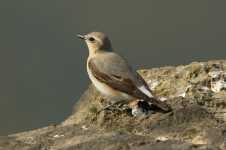
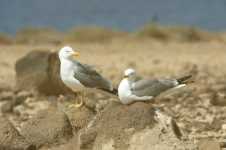
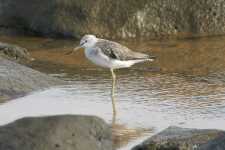
The Golden Plover are also appearing on the Axle Lane fields, just 4 birds so far hopefully to be joined by a few hundred more in October.
The above three species are usually recorded around this time over Axle Lane. A rarer visitor although becoming more frequent is the Yellow-legged Gull. This gull is a sub-species of the noisy Herring Gull seen at the coast, but with yellow instead of pink legs. It is a Mediterranean bird which is quite common in Southern England. Quite a few birds have been recorded this year.
A little further afield, at Hodsock, some interesting Wader birds have been seen. The site access is via a track opposite the Langold Lake café entrance, follow this past the sewage works turn, park at the next cross path, walk down the track to view the water on the right. Here recently have been Greenshank, long greenish legs and a long bill stand out. Also Green Sandpiper, a smaller bird with shorter legs and a dark spotted back. 3 birds of each species have been seen. Both species are termed passage migrants, they breed further north and pass through our region on their way to Africa or southern Europe.
Raptor birds common over the village are the hovering Kestrel, the fast flying Sparrowhawk and the much larger Buzzard. Hirudines, that is House Martin and Swallow, will soon be absent from our Todwick sky, Swift have already gone most by the middle of August.
Brian Chambers
SK58 Birders – March 2017
At the 29 March 2017 Indoor Meeting of SK58 Birders Mike Vickers will give a presentation on “Madagascar”. Next month the talk will be by Gary Hobson, his topic is “Birding Scilly”. New members will be very welcome, especially ones from Todwick.
Locally Red Kites have been spotted fairly frequently within a 2-mile radius of the village. Most people are probably familiar with this large Rapture and its striking red, forked tail. There have been many release programmes throughout the country, now birds are looking for new territories in which to become established. Todwick area is definitely suitable with many surrounding open fields likely to hold some carrion, the bird’s preferred food but they will also manage on smaller stuff such as beetles, earthworms and any discarded offal.
This week 4 Buzzard were circling above our garden, a record number. Their loud piercing mewing calls are difficult to miss, coming from overhead the birds usually stand out although they may be quite high in the sky as thermals carry them ever higher.
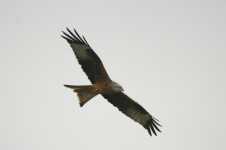
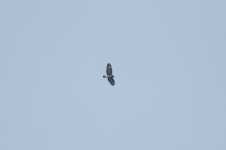
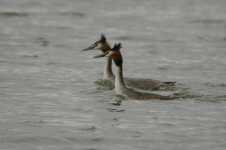
Chiffchaff warblers are now back from Africa, their calls, repeating their name, will soon be everywhere. They are amongst the first returning migrants, soon to be joined by Willow Warbler, Blackcap and Sand Martins. Sand Martin nest on the quarry face at the Fox Covert pond.
Great Crested Grebe are also highly visible as they perform their mating dance. Usually there are 3-4 pairs on Langold Lake and a pair also at the Fox Covert fishing pond.
Whilst the leaves are still absent from the trees it is a good time to view some woodland species. It is always welcome to see a Great-spotted Woodpecker, they will be drumming and calling now attempting to attract a mate.
Also, two tree-trunk feeding birds are a little more visible now, Nuthatch which often works its way headfirst down the tree and Treecreeper which climbs up the trunk, both in search of insect food.
There is plenty of bird song around now, the repetitive call of the Song Thrush, Blackbird, Chaffinch, Robin and Wren are some of the common songsters.
Brian Chambers
SK58 Birders – February 2017
Our next meeting is on Wednesday, 22 February 2017 at 7.30 pm at the Loyal Trooper, South Anston. The talk is by a regular visitor to SK58 – Bob Croxton, the subject is “Raptors through the Straits of Gibraltar”. 29 March 2017 meeting also welcomes back a regular, Mike Vickers, he will talk about “Madagascar”. As always non-members are very welcome to attend.
Locally, Waxwings have been scarce despite a good influx of birds into the country from Northern Europe. Sightings have been reported from Brandsmere Drive, Woodsetts, this is a site where in previous years the birds feed on an abundance of Guelder Rose berries. A small flock has also been seen, albeit briefly, in gardens near Netherthorpe Aerodrome.
If you love to see Barn Owls hunting then Dinnington Woodlands is the place to visit. Access the site by the entrance road to Bluebell Hospice off Cramfitt Road, park just here, scan over the grassland towards the bird hide at dusk and with luck the Owl should appear. The whole site stretching as far as Todwick Road to the west and Dinnington to the North is great hunting habitat for the Owls.
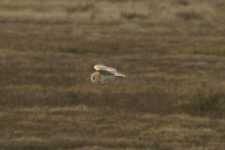
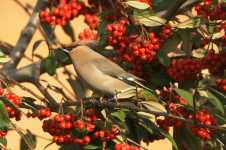
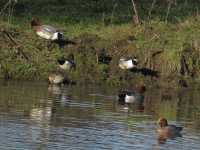
Tommy Flockton’s Marsh – off the Harthill Road, has supported good numbers of Wigeon and Teal this month, as many as 16 birds of each species. The water level on the site is good with Mallard, Grey Wagtail, Pied Wagtail, Coot and Moorhen also present. There is a good extent of shallow water margin which could attract some wader birds, Green Sandpiper, Redshank, Dunlin, Oystercatcher are all possibilities.
The frosty weather has attracted lots of birds into our garden, sunflower heart feeders, mixed seed and fat balls being a welcome easy meal. Numbers have been as good this year as any in the past with c.50 Chaffinch, 15 Greenfinch, 6 Goldfinch, 20 Yellowhammer, 20 House Sparrow, 20 Blackbirds as well as Robins, Wrens, Tits and Dunnocks, plus rather less welcome Woodpigeon and up to 9 Magpie. So far no Brambling, which is an orange breasted relative of the Chaffinch – from Northern Europe.
Continue to 2016 reports.
